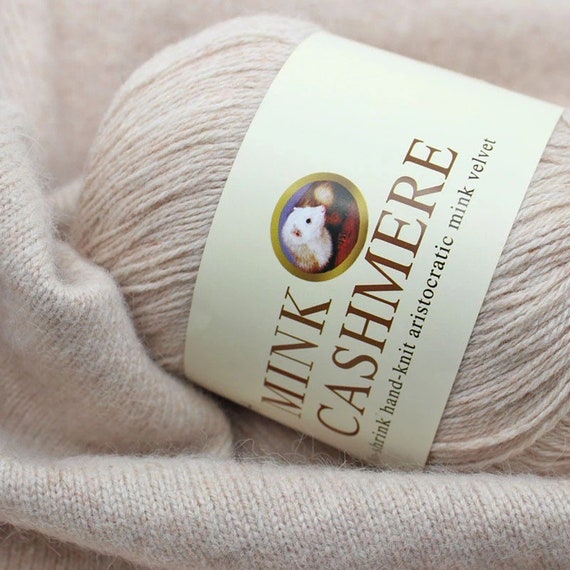Discovering the Various Kinds Of Cashmere an All-natural Fiber for Ultimate Luxury
Cashmere, a natural fiber, is often associated with deluxe and comfort. Not all cashmere is produced equivalent. From the richly soft Mongolian range to the light-weight heat of Indian Pashmina, each kind presents its own special features and allure. The a lot more inexpensive Chinese cashmere, the standard Scottish version, and the premium Italian mix, all tell a different story of this amazing fiber. As we unwind the globe of cashmere, a much deeper understanding of its real worth and sophistication begins to emerge.
Recognizing the Lavish Nature of Cashmere
Cashmere, frequently related to luxury and comfort, holds an unique allure in the globe of all-natural fibers. This soft, light-weight material is fancied for its extraordinary warmth and amazing resilience. Unlike other all-natural fibers, cashmere combines insulation with breathability, supplying unmatched convenience across varying temperature levels. Its glossy surface and soft structure add to its premium charm, validating the premium rate that commonly includes cashmere garments. Additionally, cashmere's inherent crease resistance and flexibility enhance its worth, making it a recommended option for costs apparel and accessories. Despite its fragile appearance, cashmere possesses a shocking durability, able to retain its form and glamorous feel with time. This distinct mix of attributes cements cashmere's placement as a sign of elegance and extravagance.
Just What Is Cashmere and Where Does It Originate from?

Cashmere is derived from the soft undercoat of cashmere goats, primarily found in Mongolia, China, Iran, and Afghanistan. This precise process adds to the deficiency and high price of cashmere. With its beginning in the rough landscapes of Asia, cashmere is a testimony to nature's capacity to generate deluxe from difficulty.
Translating the Various Sorts Of Cashmere
Recognizing the various kinds of cashmere is crucial to appreciating the high quality and distinct qualities of this glamorous material. Typically, cashmere is categorized into 3 kinds: raw, virgin, and recycled. Raw cashmere is directly obtained from the goat and is unrefined. This kind commonly consists of pollutants such as dirt and coarse hair. Virgin cashmere, on the various other hand, is the pure, unrecycled product that is rotated right into thread for the very first time. It is the softest and click here for more most extravagant. Recycled cashmere is made from virgin material that has actually been previously used. It is re-spun and made use of in generating lower-cost cashmere products. Decoding these kinds is the very first step in understanding the exclusivity and worth of cashmere.

The One-of-a-kind Features of Each Kind Of Cashmere
Having actually discovered the various groups of cashmere, it emerges that each kind flaunts its one-of-a-kind collection of attributes. Mongolian cashmere, as an example, is renowned for its remarkable high quality, because of Mongolia's severe winter seasons that create longer and finer fibers. Conversely, Chinese cashmere is frequently much more economical, though its shorter fibers can reduce durability. Scottish cashmere is celebrated for its elegant soft qualities, an outcome of the conventional water washing procedure utilizing Scotland's soft water. Italian cashmere, on the other hand, is well-known for its skillful mixing and coloring techniques, providing it lively and versatile. Finally, Indian cashmere, also referred to as Pashmina, is cherished for its incredible agility and warmth. Each type, thus, contributes to the textile's track record for luxury.
Why Cashmere Is the Embodiment of Luxury in Fashion
Cashmere holds an esteemed setting on the planet of fashion, considered an icon of luxury and elegance. Its attraction is not just in its softness and warmth, yet also in its rarity and the precise procedure associated with its procurement. Cashmere is originated from the fine undercoat of Himalayan goats, recognized for their premium quality fiber. The shortage of this fiber, incorporated with the labor-intensive procedure of collection, adds to its high price and exclusive condition. Cashmere's unrivaled comfort and sturdiness make it an in-demand product in the production of premium garments. Its all-natural light-weight and shielding properties contribute to its desirability, making it the epitome of high-end in fashion.
The Refine of Making Cashmere: From Goat to Garment
The journey of cashmere, from being an undercoat of a Himalayan goat to a lavish garment, is a complex one. This mix is then fastidiously separated, with just the soft down used for cashmere. From goat to garment, each step is a testimony to the ability, patience and creativity entailed in crafting cashmere.

Final Thought
Finally, cashmere, with its natural elegance and unparalleled convenience, reigns supreme worldwide of deluxe fashion. The diversity in kinds, ranging from the soft informative post Mongolian, lightweight Indian Pashmina, affordable Chinese, typical Scottish, to the vibrant Italian, reveals the convenience of this natural fiber. The scrupulous procedure of transforming it from a goat to a garment better contributes to its exclusivity, making cashmere the embodiment of class and luxury.
Cashmere, an all-natural fiber, is typically associated with high-end and comfort (is cashmere a natural fiber).Cashmere, commonly associated with deluxe and comfort, holds an one-of-a-kind appeal in the globe of natural fibers. Unlike various other natural fibers, cashmere combines insulation with breathability, using unrivaled convenience across varying temperature levels. Cashmere is obtained from the soft undercoat of cashmere goats, largely found in Mongolia, China, Iran, and Afghanistan. Cashmere is obtained from the great undercoat of Himalayan goats, known for their advice premium quality fiber